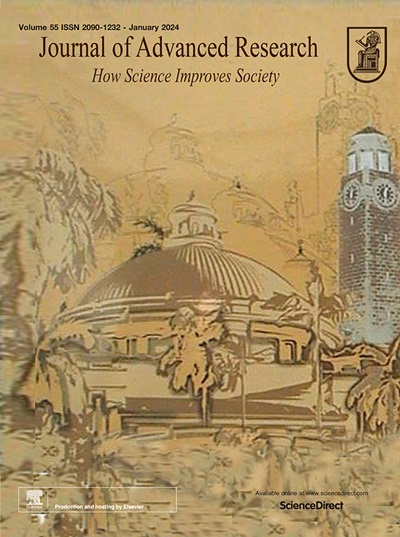三维多模态成像预测肝细胞癌术后早期复发
IF 13
1区 综合性期刊
Q1 MULTIDISCIPLINARY SCIENCES
引用次数: 0
摘要
背景:肝细胞癌术后高肿瘤复发仍然是治疗肝细胞癌(HCC)的一个重大挑战。我们的目的是建立一个多模式模型来预测肝癌手术切除后的早期复发,并探讨相关的生物学机制。材料和方法共纳入来自三个医疗中心的519例HCC患者。以南方医院的433例患者为训练队列,另外两家医院的86例患者为验证队列。放射组学和深度学习(DL)模型是使用对比度增强的计算机断层扫描图像开发的。采用放射组学特征可视化和梯度加权类激活映射来提高可解释性。将放射组学模型与DL模型相结合,构建了多模态模型(MM-RDLM)。分析MM-RDLM与无复发生存期(RFS)和总生存期之间的关系。采用基因集富集分析(GSEA)和多重免疫组化(mIHC)研究其生物学机制。结果基于肝动脉期图像的模型表现出最好的预测效果,在训练队列中,放射组学和DL模型的曲线下面积(auc)分别为0.770(95 %置信区间[CI]: 0.725-0.815)和0.846(95 % CI: 0.807-0.886)。MM-RDLM在训练组的AUC为0.955(95 % CI: 0.937 ~ 0.972),在验证组的AUC为0.930(95 % CI: 0.876 ~ 0.984)。MM-RDLM(高与低)特别是培训与RFS(危险比[HR] = 7.80[5.74 − 10.61],P & lt; 0.001)和验证(HR = 10.46[4.96 − 22.68],P & lt; 0.001)军团。GSEA显示自然杀伤细胞介导的细胞毒性途径在MM-RDLM低队列中富集。在MM-RDLM低浓度组,mIHC显示CD3-、CD56-和cd8阳性细胞的百分比显著增加。结论MM-RDLM模型对肝癌术后早期复发具有较强的预测能力。这些发现有助于识别早期复发高风险患者,并为潜在的潜在生物学机制提供见解。本文章由计算机程序翻译,如有差异,请以英文原文为准。

Three-dimensional multimodal imaging for predicting early recurrence of hepatocellular carcinoma after surgical resection
Background
High tumor recurrence after surgery remains a significant challenge in managing hepatocellular carcinoma (HCC). We aimed to construct a multimodal model to forecast the early recurrence of HCC after surgical resection and explore the associated biological mechanisms.Materials and methods
Overall, 519 patients with HCC were included from three medical centers. 433 patients from Nanfang Hospital were used as the training cohort, and 86 patients from the other two hospitals comprised validation cohort. Radiomics and deep learning (DL) models were developed using contrast-enhanced computed tomography images. Radiomics feature visualization and gradient-weighted class activation mapping were applied to improve interpretability. A multimodal model (MM-RDLM) was constructed by integrating radiomics and DL models. Associations between MM-RDLM and recurrence-free survival (RFS) and overall survival were analyzed. Gene set enrichment analysis (GSEA) and multiplex immunohistochemistry (mIHC) were used to investigate the biological mechanisms.Results
Models based on hepatic arterial phase images exhibited the best predictive performance, with radiomics and DL models achieving areas under the curve (AUCs) of 0.770 (95 % confidence interval [CI]: 0.725–0.815) and 0.846 (95 % CI: 0.807–0.886), respectively, in the training cohort. MM-RDLM achieved an AUC of 0.955 (95 % CI: 0.937–0.972) in the training cohort and 0.930 (95 % CI: 0.876–0.984) in the validation cohort. MM-RDLM (high vs. low) was notably linked to RFS in the training (hazard ratio [HR] = 7.80 [5.74 − 10.61], P < 0.001) and validation (HR = 10.46 [4.96 − 22.68], P < 0.001) cohorts. GSEA revealed enrichment of the natural killer cell-mediated cytotoxicity pathway in the MM-RDLM low cohort. mIHC showed significantly higher percentages of CD3-, CD56-, and CD8-positive cells in the MM-RDLM low group.Conclusion
The MM-RDLM model demonstrated strong predictive performance for early postoperative recurrence of HCC. These findings contribute to identifying patients at high risk for early recurrence and provide insights into the potential underlying biological mechanisms.求助全文
通过发布文献求助,成功后即可免费获取论文全文。
去求助
来源期刊

Journal of Advanced Research
Multidisciplinary-Multidisciplinary
CiteScore
21.60
自引率
0.90%
发文量
280
审稿时长
12 weeks
期刊介绍:
Journal of Advanced Research (J. Adv. Res.) is an applied/natural sciences, peer-reviewed journal that focuses on interdisciplinary research. The journal aims to contribute to applied research and knowledge worldwide through the publication of original and high-quality research articles in the fields of Medicine, Pharmaceutical Sciences, Dentistry, Physical Therapy, Veterinary Medicine, and Basic and Biological Sciences.
The following abstracting and indexing services cover the Journal of Advanced Research: PubMed/Medline, Essential Science Indicators, Web of Science, Scopus, PubMed Central, PubMed, Science Citation Index Expanded, Directory of Open Access Journals (DOAJ), and INSPEC.
 求助内容:
求助内容: 应助结果提醒方式:
应助结果提醒方式:


